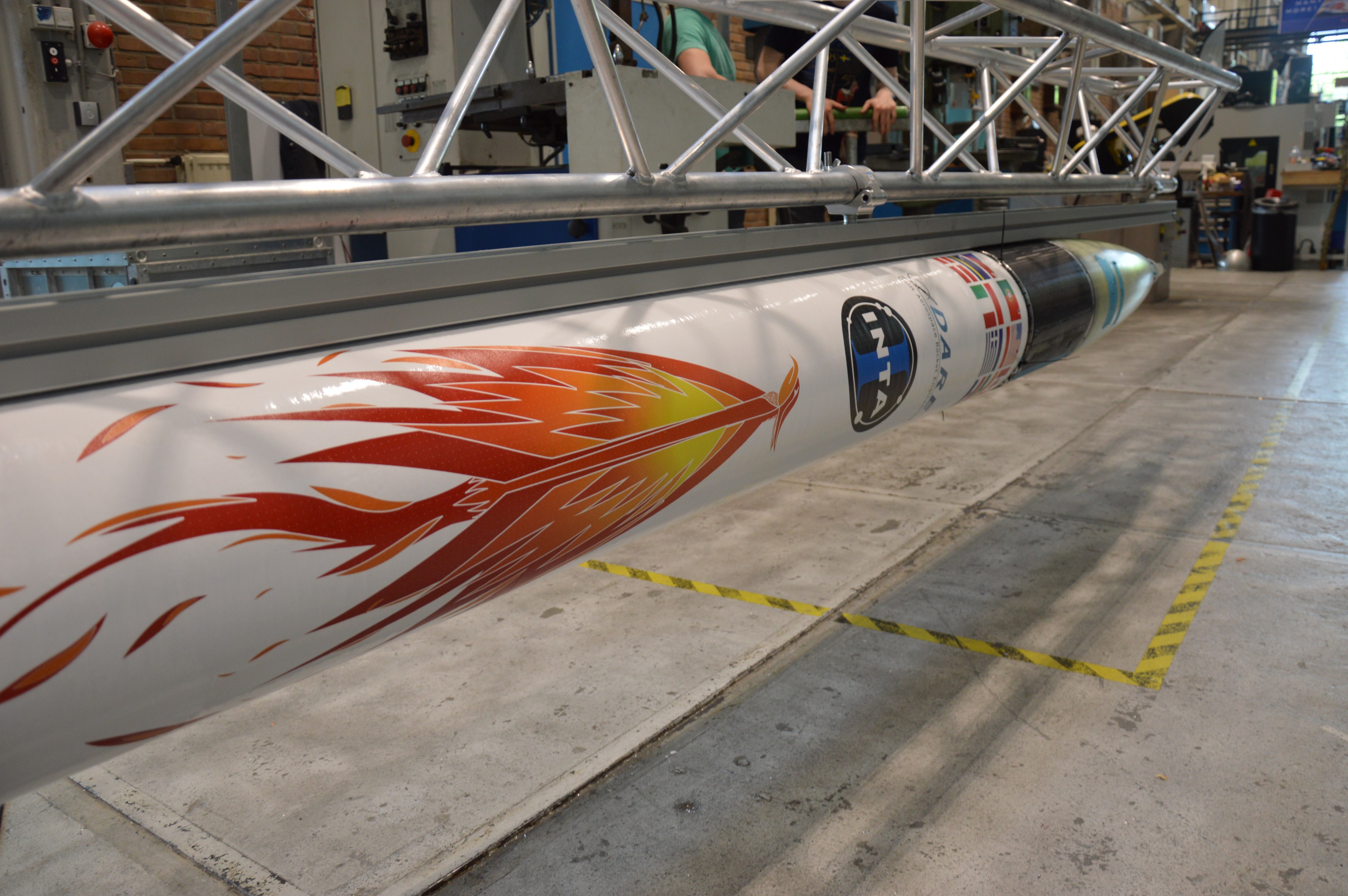
A year and a half worth of work will finally be shown on the 16th of July. Our very own Stratos III will be launched this summer at INTA, Spain. With launch fast approaching, the teams are working hard to meet all the deadlines.
The propulsion team have been hard at work testing out their engine. The DHX-400 Nimbus hybrid engine which will consist of a fuel combination of 80% Sorbitol, 10% Paraffine and 10% Aluminium powder with a Nitrous Oxide oxidizer. The latest engine test yielded a maximum burn time of 38 seconds and a maximum thrust of 25 kN. This was a milestone for the propulsion team as they exceeded the actual burn time of 28 seconds. Kudos to the propulsion team!
The recovery team have been on a nonstop testing streak testing the parachutes for Stratos III. The tests are part of the acceptance testing of the flight hardware. All the flight parachutes have been accepted and now can be used for actual flight. To retrieve the flight data of Stratos III, we will recover the nosecone using two parachutes located in the recovery bay. One small drogue to stabilise the nosecone after the free fall through the atmosphere and one larger main parachute to reduce the velocity to landing velocity. The recovery bay houses also the deployment systems for both the parachutes, the camera systems and the packs with a fluorescent liquid that is released into the water to help with the retrieval of the nosecone.
Essentially once the rocket is launched, the rocket will be controlled by the flight computer. Stratos III’s flight computer is housed in the nosecone, consisting of 7 stacked printed circuit boards (PCBs). Together, the PCBs control the control the flight on their own and decide on critical situations. During the flight, the flight computer also manages all data streams like the live video stream, telemetry and Blackbox data. The main control unit PCS even has a GPS receiver: in total, the flight computer is connected to 5 antennas.
The structures team have been busy with the separation system. The system will be used to separate the nosecone with all the electronics and payload containing important measurements taken during flight, from the rest of the rocket.
In addition to this, the Stratos III team have been occupied with the construction of the launch tower. The tower will be used to help raise and support the Stratos III rocket before lift-off. The tower will be almost twice as tall as the tower used for Stratos II+ (our predecessor).
The final dress rehearsal will be conducted this weekend, and the rocket will be assembled as complete as possible. All the protocol will be discussed to ensure that the actual launch of Stratos III will go as smoothly as possible. Best of luck to all members of Stratos III!
by Atiqah Tarmizi




